Birds and Bards: Beautiful Japanese Images from the Edo Period
Everything from parrots to gossipy novels influenced art in Japan between 1603 to 1868
/https://tf-cmsv2-smithsonianmag-media.s3.amazonaws.com/filer/Japanese-Bird-Print-Edo-470.jpg)
Two new exhibits at the Freer Gallery explore the riches of the Japanese art collections and reveal how pieces of everyday life make appearances in works of art. Together, “Arts of Japan: Edo Aviary and Poetic License: Making Old Worlds New” show how artists of the Edo period (1603 to 1868) were influenced by a growing field of natural history, as well as evolving literary traditions and practices.
Selections from the exhibits, depicting some of these elegant representations of birds and bards, are featured here.
Poetic License
The Edo period (Edo was the former name of today’s Tokyo) was remarkably peaceful and stable. Japan was largely closed off to the rest of the world during this period. Though isolated, the country was still able to foster local cultures and take advantage of the new printing technologies. Everything from poetry to popular literature was printed and circulated and artists, in turn, incorporated themes of the day into their works.
One scene (below) referenced the well-known Tale of Genji, the 11th-century novel by lady-in-waiting Murasaki Shikibu. The story follows an emperor’s son and his romantic life after he is given “commoner status” for political reasons.
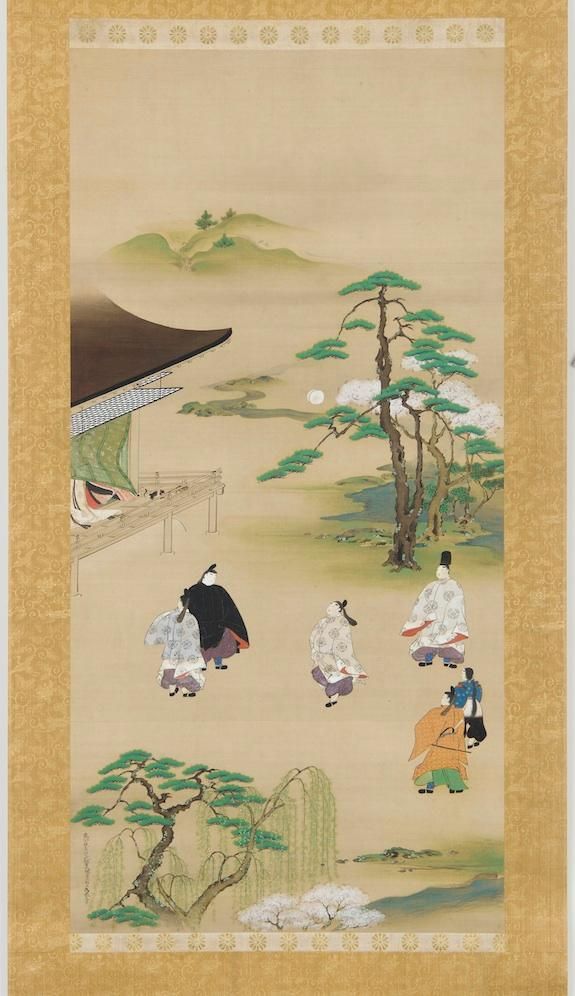
Poetry was also popular at the time, and few poets were more popular than Ono no Komachi, renowned for her beauty during her lifetime in the ninth century.
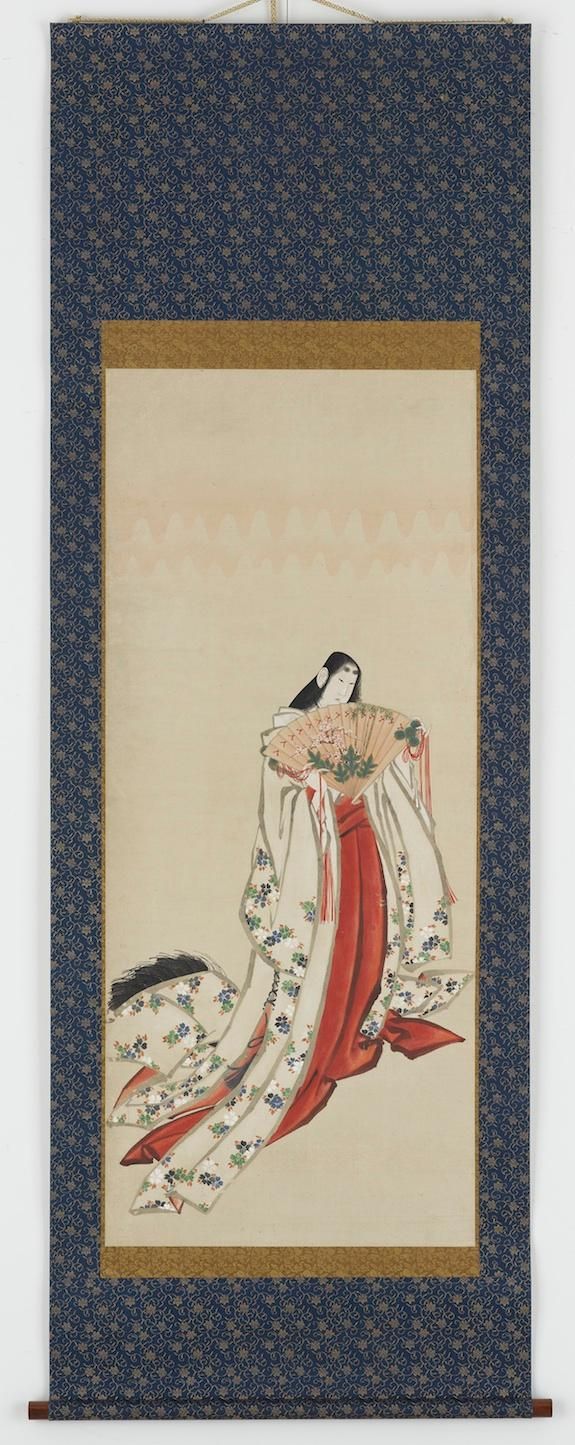
Another one of the six great poets of the ninth century, Ariwara no Narihira was of noble blood but scandals kept him from higher rank.

Edo Aviary
In part, the spread of Neo-Confucianism during the Edo period allowed for a more secular point of view. Interest in the natural world was informed not just from a spiritual realm but also from a more scientific understanding.
Curator James Ulak says, “The rooster was thought to embody the Five Virtues: martial spirit, literary accomplishment, loyalty, courage and virtue. The 18th century, in particular, witnessed a number of Japanese painters issuing quite spectacular renderings of these creatures.”
In the case of artist Kishi Ganku, however, the rooster become a tool for social critique. Ulak says this painting from Ganku, “offers the artist’s characteristically jaded view of an icon held in high esteem.” By transforming the rooster into “an elongated and threatening creature,” Ganku suggests something ominous about the esteemed bird. “The most telling episode in the composition is the feeding process; a hen passes a dragonfly to a ravenous chick. The dragonfly’s eyes imply horror and this brilliant, minuscule touch conveys Ganku’s skill at suggesting the darker side of the ostentatiously regal.”
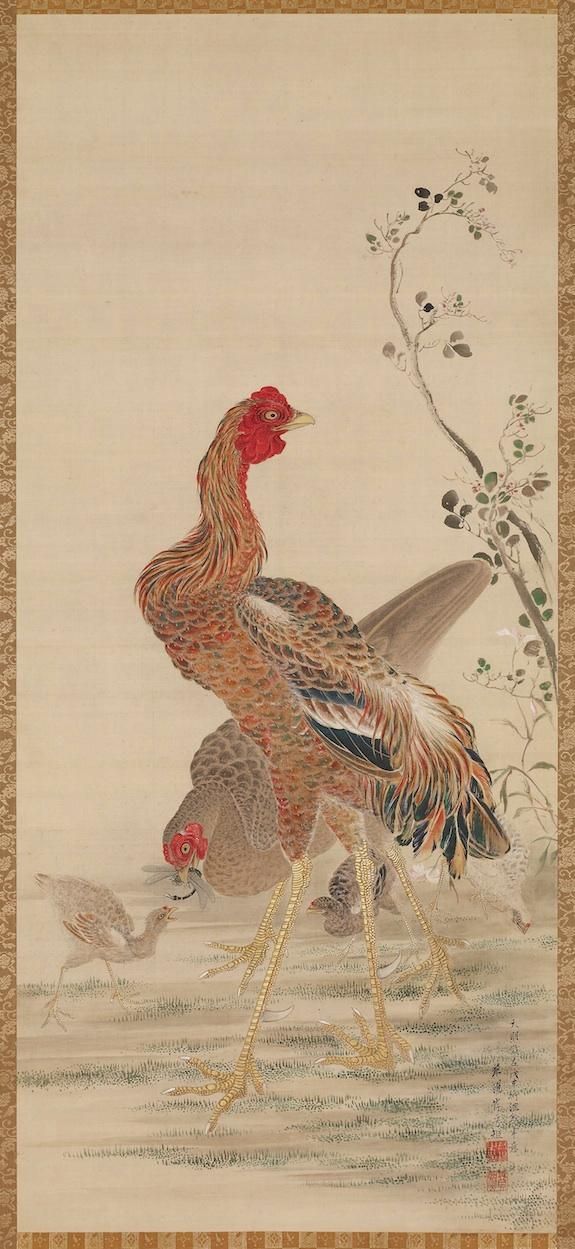
Other artists, like Yamaoto Baiitsu, used birds to captures scenes of the changing seasons.
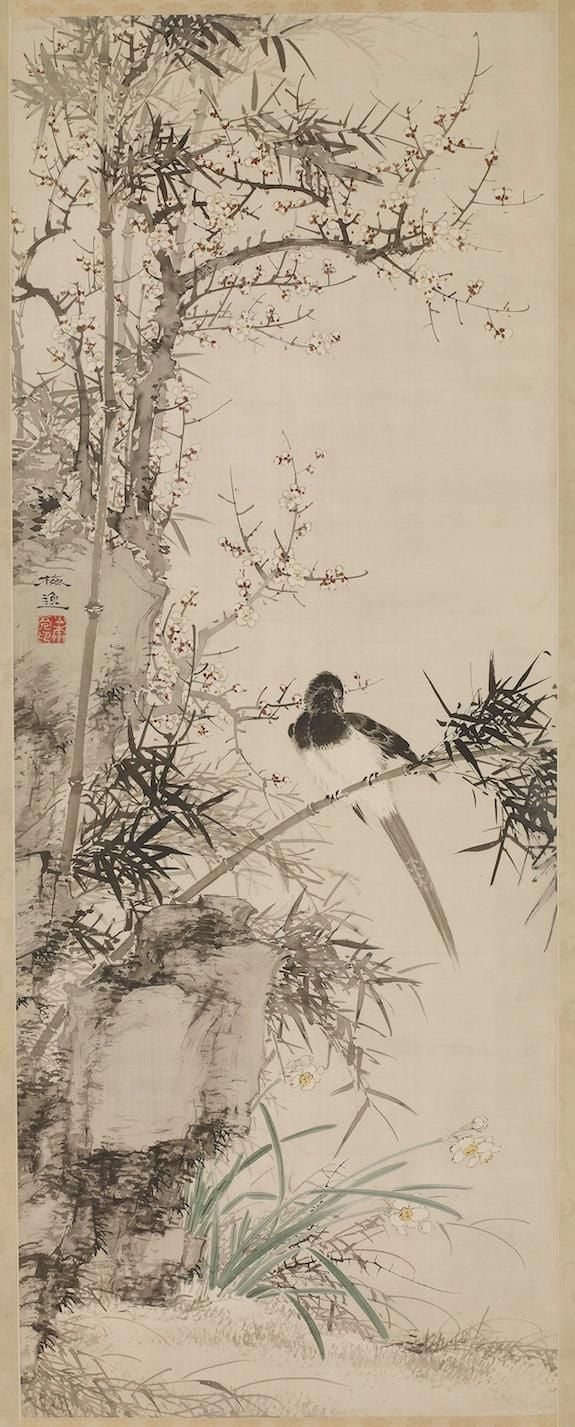
More exotic birds also populated Edo period paintings. Parrots, for example, were rare in real life but found their way to paintings. The birds were first imported for the Imperial Court around the ninth century, according to the British Museum. They remained rare during the Edo period but could be found at entertainment stalls in some cities.
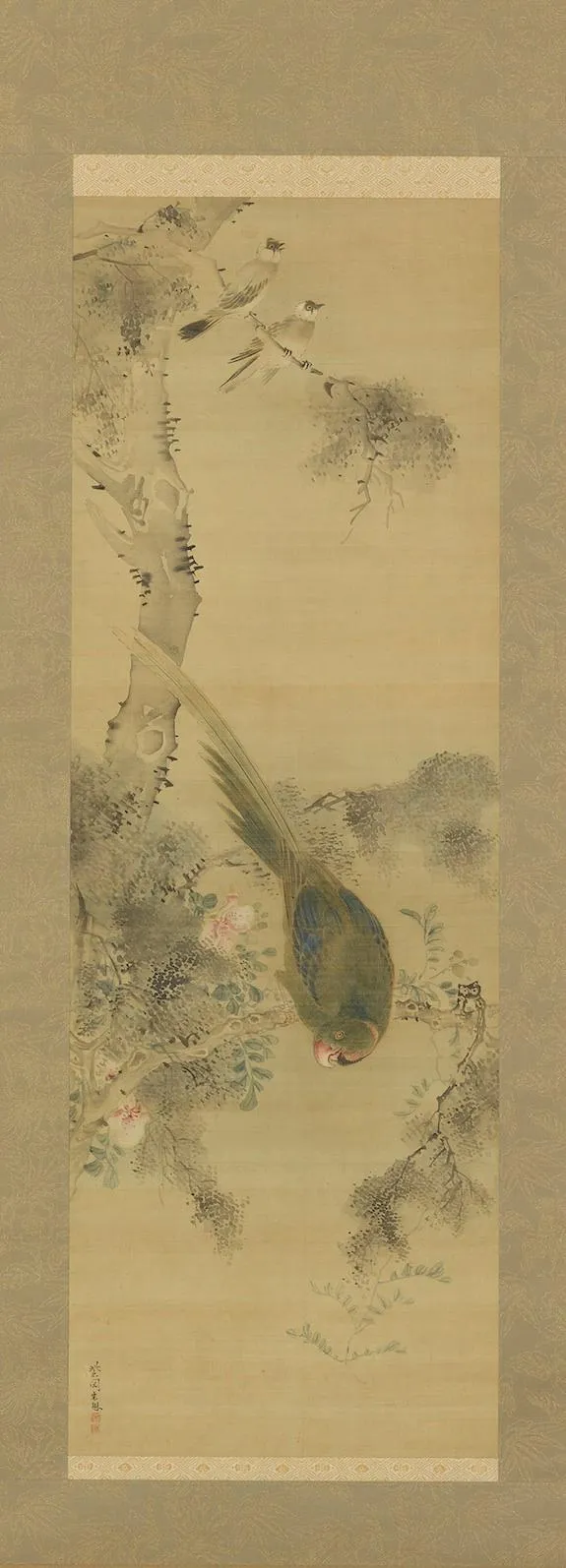
”Arts of Japan: Edo Aviary and Poetic License” both run through August 4, 2013 at the Freer Gallery.
/https://tf-cmsv2-smithsonianmag-media.s3.amazonaws.com/accounts/headshot/Leah-Binkovitz-240.jpg)
/https://tf-cmsv2-smithsonianmag-media.s3.amazonaws.com/accounts/headshot/Leah-Binkovitz-240.jpg)